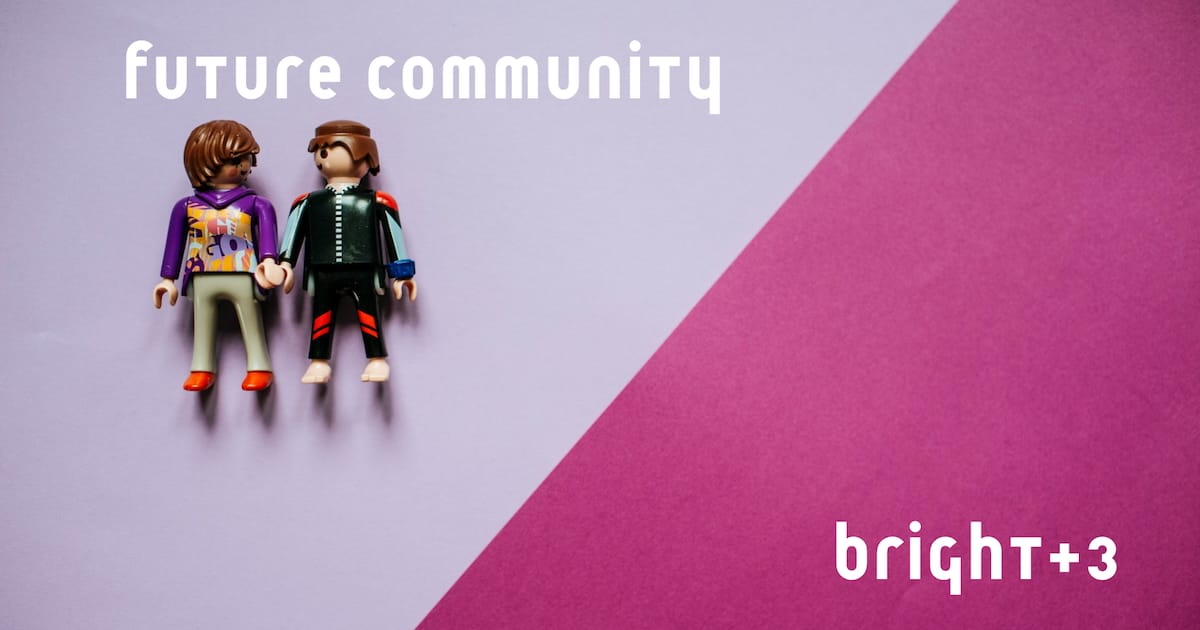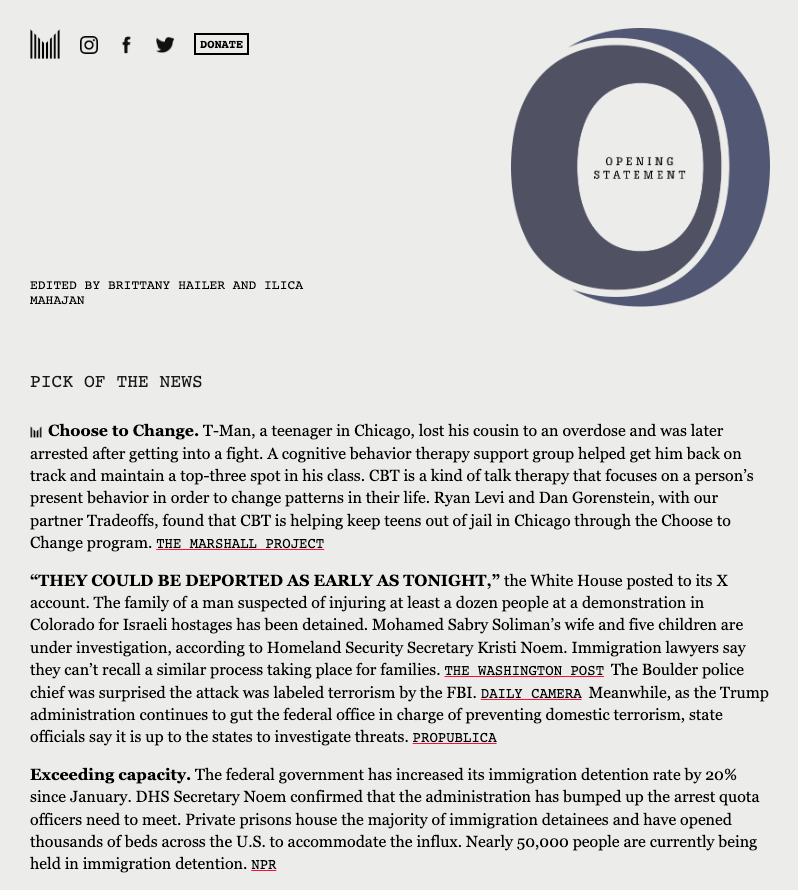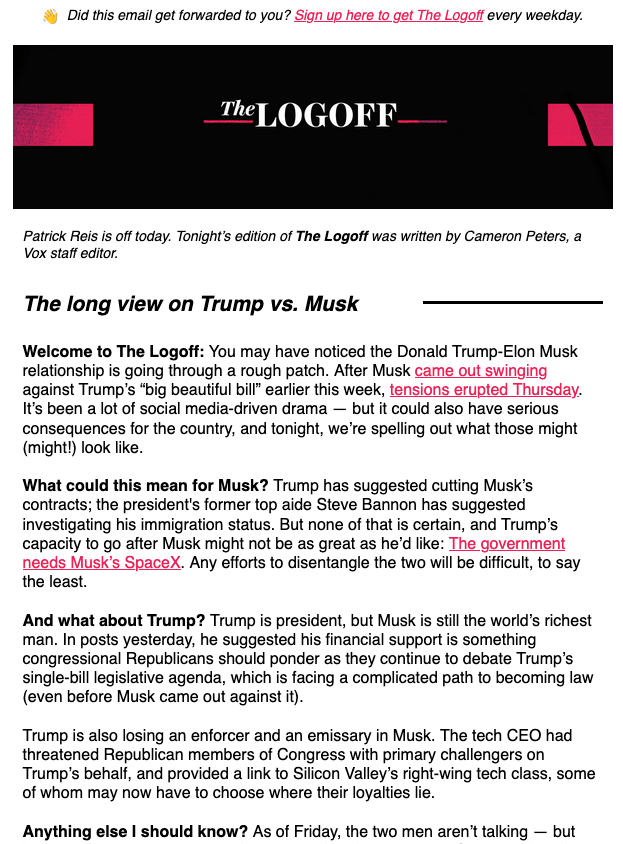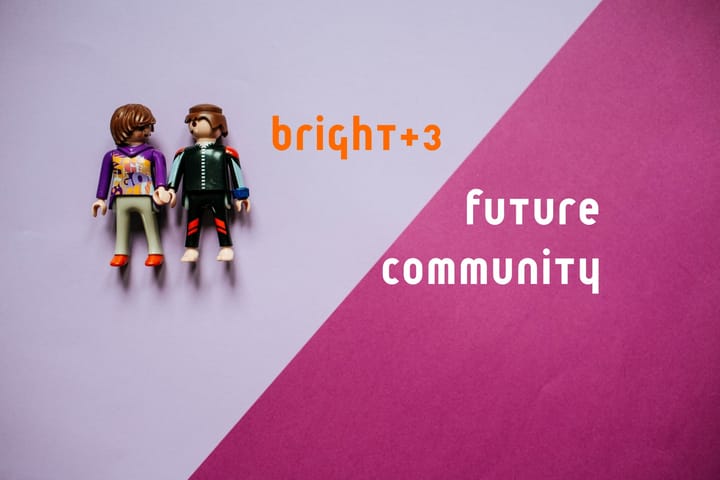We're talking newsletters here folks + new jobs and events
Answers to four common questions about setting up and running email newsletters.

👋 Hi everyone. We're talking about newsletters. But first a huge welcome to new folks: Rey, Morgan, Greg, Jim, Smiriti, Shane, Geoff, Avi, Ann, RF, Mahlet, Linda, Elizabeth, Brent, Laura, Kurt and John.
To Do:
- There are 27 new roles listed below. This is the second newsletter of the week so it's a shorter list. I also have a bunch stacked up from Friday but not enough bandwidth to get them posted (though the could be on the big board by the time you see this).
- Check out the new Future Community Jobs board. Same roles as the main page. Includes tools for posting a job if you're hiring and want some extra help. There are also some search and sorting improvements for you.
- Please click reply and say hello if get a moment. Happy to answer any questions, hear what you're working on or set up a time to check in.
- What do we really want from AI? was shared a few days ago in case you missed it and want another AI-related article.
We're talking newsletters
Ahead of next Tuesday's Newsletter Nerd Club (there's still time to sign up here) I wanted to share a few examples and offer a few answers (or tips) on common "how do I?" and "what should we do?" newsletter questions.
Specific answers depend on goals, audience, type of project. But here are a few generally useful principles.
Do I even need a newsletter?
You may not need a newsletter. Why not?
- The problem you need to solve doesn't involve people who rely on email.
- You don't have a problem that can be solved by informing people with newsletter content.
Nonprofits use newsletters mostly as updates on recent work and upcoming events. This might be a useful problem to solve with email. But let's this subset of newsletter an update.
There are many other problems a newsletter can help solve. Here are a few use cases for needing a newsletter:
- Demonstrate thought leadership by meeting people's need to know more about a topic. Your CEO, policy director, or communications lead may need or want positioning as a leading voice in your sector or on a particular issue. A newsletter can help deliver ideas and stories that set that positioning. Just be sure to be very clear about the audience for this kind of newsletter and how its content is solving reader problems, not just your positioning need.
- Provide context, depth, and conversation to a line of work or other communications product (like a podcast). A newsletter could provide unique content and attention to recurring donors, for example. If you're starting a podcast or a video series (on YouTube, Instagram or TikTok) a newsletter can offer listeners or viewers a sense of identity and help tell the story.
- Teaching a skill or diving deeper into the work. For example, a newsletter could be built around a set of how-tos that cover volunteering, organizing, public speaking, canvassing, or other other leadership practices. This provides tangible skills to a set of supporters. And may be useful to people who may not know about your work but are looking to learn the skills that your team already has.
These are just a few examples. Note that none of these are update type newsletters. And none are targeting "our email list." A podcast, Reels, or TikToks could address all these needs. Newsletters often complement other communications products. And a newsletter delivers you an email address you control instead of a follower on a social platform controlled by an opaque corporate algorithm.
Who's the audience for this?
For organizations the audience answer is not our email list. Update type newsletters are often sent to the list by default. If you have a small org/list (couple hundred to maybe a couple thousand people) of members who are connected in other ways (events, trainings, experiences, offline relationships) this can make sense.
But most people on your email list don't have a need or a problem that's going to be solved by your newsletter. And sending the newsletter to everyone isn't going to help you craft content, design and calls to action that appeal to anyone.
Audience work can go down all kinds of rabbit holes. It can be a science. News organizations are building audience teams of editors, writers, reporters, producers, data analysts and more.
Here's a simpler way to think about your audience: it's the overlap of people who are trying to solve a problem and people who can help solve your problem.

The trick is identify your problem or need. And clarifying the needs of the reader or supporter.
But we do this all the time in communications and marketing. We don't target ads at website (or every website visitor) or every Instagram user. Or send direct mail to every resident of New York City.
The emphasis is on your needs and goals AND the users needs. Your goal might be get people to give more money or time in support of your work (a little general but we'll go with it). Consider people who have a problem related to your work. They may need to learn more about clean energy costs, food costs, how to hike and camp safely, or how to run campaigns and meetings in support of your issue.
A newsletter that helps people solve problems and meet their needs (not just your needs) will reach and engage people.
Where should we build our newsletter?
My first suggestion: build your newsletter on the platform you already run your email, fundraising and other supporter engagement activities. This means Mailchimp, Engaging Networks, EveryAction, Action Network, Hubspot and more.
This keeps data together, utilizes resource and skills you already have, and should make it easier to start and sustain a newsletter.
But existing tools (and data structures and staffing) can be an obstacle. And if your newsletter is largely targeting new people you may not need to consider data integration (though it's going to come up).
Some more newsletter-specific platforms that I've used include:
There really are a lot of options. Most (at least those above) are lightweight, quick to setup and flexible with design and skill level.
I didn't mention Substack yet. Here are some thoughts. Basically, I hate to see organizations, especially nonprofit and social good organization, using Substack. But it's a reasonable option you're an individual who wants to test the waters of a newsletter/blog without much upfront cost or setup drama. Not judging.
What would be in the newsletter besides links to our stuff?
Think of a newsletter as a destination, not a vehicle. It's where you want to be, not just a shipping container that transits folks to your website.
If people get something they value, use, remember they will connect it to you, tell others, find you, be more likely to click
A newsletter has a brand all its own - a name, a feel, a voice, a perspective.
- This can (and usually should) align with, complement, deepen your org brand, feel, voice.
- As something that is in the inbox, goes right to people, and which you control (much more so than the look/feel/findability of a social post) you can use it to spread and reinforce brand.
Here's a screenshot of a recent newsletter from The Narwhal, a climate and environment news outlet in Canada. I realize that a news organization is in the business of creating content (and most nonprofits aren't). But notice the storytelling and voice. The newsletter delivers its own story. The newsletter is meant to be read and remember. It doesn't simply force folks to go elsewhere (which is less memorable). There are plenty of links to recent stories down below

Here's another example. This is the daily morning newsletter sent by the Marshall Project, an advocacy group that leans heavily into content and original journalism. I realize most advocacy groups aren't going to be so content driven (and maybe they shouldn't). But realize that people are here for a content-rich newsletter if you have the content to deliver in it.

Another example: Vox's The Logoff newsletter started up after Trump took office. It's a short daily (weekdays, that is) that picks up a big Trump related issue of the day (no shortage of those) and gives a four to five paragraph explainer. It's not policy heavy. It's not full of visuals and graphs. It doesn't try to drive you to the Vox site. It reads like your smart DC friend breaking things down for you.

This is not all the newsletter how tos and ideas worth sharing. Soon, for example, I'm hoping to share some examples, ideas and tips around onboarding for sustainability and growth.
I'd love to hear your questions and feedback!
Bright Ideas
Chew on these to increase your daily dose of informational fiber.
First, a couple events to consider:
- Concentration Camps and the Machinery of Repression: Lessons for Saving Democracy. Free online conversation hosted by the Harvard Kennedy School on Wednesday, 11 June at noon eastern.
- Technologists and Abortion Freedom. Free online event hosted by Rights x Tech on Wednesday, 25 June at 1pm eastern.
👂Listen to the Backlight podcast's latest episode on the how, what and why of creator journalism. They interview three great creator journalists, Johanna Rüdiger, Johnny Harris, and Adam Cole (Howtown). It's a useful listen for anyone (including a lot of nonprofit comms folks I know) doing digital/social storytelling. Backlight is produced by the wonderful Lighthouse Reports.
❌ Substack is just more rented space. Read Isabelle Roughol's We've Been Thinking About Substack All Wrong.
🤔 This new Speculative Futures for Journalism project looks fascinating. Found via Mattia Peretti and News Alchemists.
🏙️ Civic Space is Closing: How Local Journalism Can Open it Up by Jennifer Brandel.
💜 Read Dan Sinker's The Who Cares Era. I'd paste in the whole thing if I could. Here's a bit:
In the Who Cares Era, the most radical thing you can do is care.
In a moment where machines churn out mediocrity, make something yourself. Make it imperfect. Make it rough. Just make it.
At a time where the government's uncaring boot is pressing down on all of our necks, the best way to fight back is to care. Care loudly. Tell others. Get going.
As the culture of the Who Cares Era grinds towards the lowest common denominator, support those that are making real things. Listen to something with your full attention. Watch something with your phone in the other room. Read an actual paper magazine or a book.
Be yourself.
Be imperfect.
Be human.
Care.
Almost 1,000 truly amazing people read Future Community. I know a lot of them personally. Newsletter engagement is.
Some are hiring.
Many are looking for a role.
Reach out if you want help finding or filling a role.
I have some ideas for you.
Future Community Jobs
Here are 27 roles from the the past few days.
You'll find a full, updated list at Future Community Jobs. There are a LOT of current and active roles there.
See also our resources page for job seekers.
Audience, content, journalism and news roles 🗞️
- Deputy Editor, Climate Desk : New York Times [Washington, DC]
- Newsletter Sales Account Executive : TechnologyAdvice [Remote]
- Digital Marketing and Subscriptions Manager : The Irish News [Belfast]
- Investigative Reporter : Consumer Reports [Yonkers, NY]
- Director of Data and Insights : Puck [New York City]
- Investigative Reporter : Consumer Reports [Yonkers NY]
- Publisher : Rest of World [Remote]
Communications 🗣️
- Communications Manager : All Voting is Local [Remote in the US]
- Communications Manager : Climate One [San Francisco]
- Senior Director of Communications : Action Center on Race and the Economy [Remote in the US]
- Vice President of Communications : Heartshare [New York City]
- Head of Marketing and Communications : Agog [Remote in the US]
- Communications Director : Nonprofit Vote [Remote in the US]
Nonprofit Roles ⚡
- Design Director : ACLU [New York City]
- Campaign Director : American Association of University Professors [Remote in the US]
- Director of Multimedia : ACLU [New York City]
- Senior Program Director, Empower and Protect : New Left Accelerator [Remote in the US]
Fundraising and Development 💰
- Associate Manager of Direct Mail and Offline Giving : League of Conservation Voters [Remote in the US]
- Development Director : The PLACE [Colorado Springs]
- Director, Digital Fundraising : American Kidney Fund [Rockville MD]
Foundations and Philanthropy 💸
- Deputy Director - Community Ownership for Community Power Fund : Common Counsel Foundation [Remote]
- Vice President, Philanthropic Advising : Climate Lead [San Francisco]
Agencies, politics, products, projects & more 💻
Nothing brand new but here a few added in the past week.
- Senior Brand Messaging Strategist : Teal Media [Remote in the US]
- Senior Director, KEEN Effect : KEEN [Portland, OR]
- Chief of Staff and Creator Coordinator : Social Currant [Remote in the US]
- Campaign Manager : Save Maine Absentee Voting [Maine]
🎶🎷 Music for those who explore the end of newsletters
I was listening to MVY Radio's show New England Sound the other night while cleaning up after dinner. They played Trust the Process by Tim Hall, a Boston-based musician and poet. It hit the spot and feels like it could speak to some others. Check it a live version I spotted.
Future Community is a product of Ted Fickes and Bright+3. Reply or visit Bright+3 to get in touch and learn more about our work.


